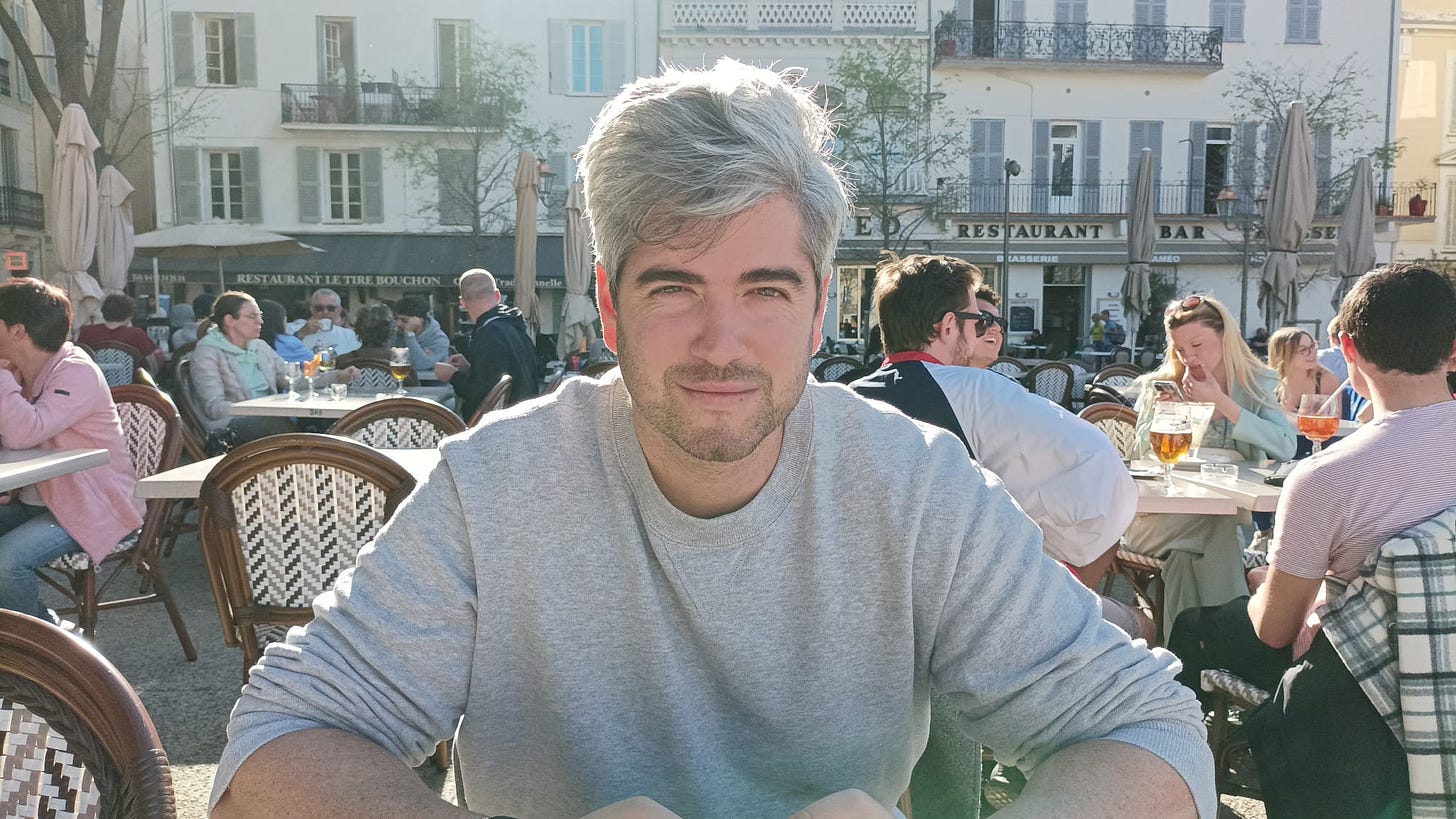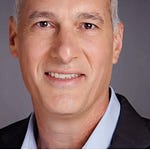The Green Techpreneur (GT) is here to #SparkTheTransition to a world where people, planet and profit align. We are a springboard platform for climate tech startups: we offer an investor/startup marketplace to help you raise funds and a magazine/podcast to share innovation and insight – by founders for founders. Join our network of over 5,200 climate tech entrepreneurs, investors, and sustainability warriors who are moving the needle on climate change.
He thought it was the perfect asset.
It grew by double digits over the last ten years, it’s regulated, trustworthy and phenomenally successful as a CO2 buster: the market and its mechanisms have helped drive an approximately 47% decrease in the EU’s industrial participants’ emissions since 2005.
Serial tech entrepreneur Valentin Lautier had been browsing the front page of the Financial Times a few years ago, when a picture of the upwards curve of the EU Emissions Trading Scheme’s (ETS) carbon allowance price caught his eye – at the time it was priced at €20, it's since shot up to about €70. “I was thinking, how do I buy this stuff? Because it's going to continue to go up, and if I buy some, I actually help the price to increase because I’m confiscating some of the supply - and then I realise that I can’t.”
It was this barrier to investment in the EU ETS that drove the French entrepreneur, who had been searching for his next venture – one that would make the proverbial ‘dent in the universe’ – to create investment platform Homaio.
Fast-forward a few years and his company is unlocking the market for retail investors.
The platform is in its infancy, but Homaio has already wooed clients from around the world—from Europe to Brazil, the United States to Singapore. Homaio is now sitting on a stash of 10,000 European carbon allowances, each one granting the right to emit one tonne of CO2. That’s 10,000 tonnes of CO2 permits taken off the market: the beauty of investing in the EU ETS is that it ‘confiscates’ emission allowances from the market, forcing prices up and thus creating the impetus for faster industrial decarbonisation.
Homaio is betting big that this will become a superstar asset class: “investors are chasing investments that offer returns, are trustworthy, easy to grasp, backed by solid evidence, and measurable. When I search for those qualities, EU ETS is the only thing that fits the bill,” says Lautier.
Kicking off in 2005, the Emissions Trading Scheme was designed to put the brakes on greenhouse gas emissions from power plants, industrial factories and aviation in the EU. It works by setting a ‘cap’ on the number of emission allowances. Companies can receive, buy, or trade these allowances within this cap, which shrinks every year, pushing companies to cut their emissions as their carbon ‘budget’ tightens.
This scheme has a massive reach, covering about half of the EU’s industrial emissions. It applies across all EU Member States, the European Free Trade Association countries, and Northern Ireland for electricity generation. Around 15,000 industrial players in Europe are required to hold allowances equal to their emissions and must return them at the year’s end.
Valentin brings 15 years experience as a tech entrepreneur to the table and doesn’t shy away from discussing the realities of green techpreneurship. When asked about how he’d describe his journey with Homaio so far, he says it’s been enthralling and exhilarating, but the word that really springs to mind is “embattled – everything is a fight.”
He remains motivated by a love for innovation, the environment, and a determination to not follow the path of least resistance: “I think what we’re doing is extremely hard and extremely new,” says Valentin. “The idea of doing the right thing, even if it’s hard, is really something that – live or die – I want Homaio to convey. We’re trying to build a different path. We’re a little bit uncompromising. There’s beauty and value in doing things right…I hope it makes a difference to those we touch.”
Can you explain what the EU ETS (Emissions Trading Scheme) is?
The EU ETS is a compliance carbon market, trading a certain number of carbon allowances every year at a monetary value fixed by the EU. The supply, or number of allowances, decreases every year and the price subsequently goes up. So the market has a standardised trading unit. The primary market is the initial purchase of the physical asset and the secondary market is where players trade derivatives amongst themselves. One of the cornerstones of its success is that industrial parties are legally obliged to participate.
It’s not the only market of its kind, nor is it the first. A great example of this kind of market is the US Sulphur Market, started by the US government in the 1990s. The aim was to drastically reduce sulphur emissions which were causing extreme acid rain in the US, and it proved successful over just ten years.
Now, there are around 40 such jurisdiction/government-led schemes with a standardised trading unit, but Europe is presently the largest and most sophisticated.
The EU only issues a fixed amount of allowances and this decreases every year: there’s always a need, but the supply is decreasing, so we get a politically driven price increase. The EU’s aim? To incentivise decarbonisation rather than offset. The price point of the allowances creates a fork in the road – do companies invest in the carbon allowances or invest in solutions and reduce their dependency?
Why do emissions trading schemes in general have such a bad reputation for greenwashing?
The reason for the negativity and scepticism around emissions trading schemes is because there are also voluntary carbon markets – thousands of them, with voluntary participation and various non-standardised units. This generates a lot of the controversies around the lack of opacity, lack of standards and lack of proven results. The voluntary markets are small, though, amounting to around $2 billion in value, or around 500 times smaller than the European market.
What practical steps did you take to unlock access to EU ETS investing?
We had to work with the regulation to open access to the underlying assets, via the EU Energy exchange and the Intercontinental exchange. Both of these exchanges trading physical assets and derivative contracts. Once access was gained, we had to wrap these assets. You need to encapsulate them in a financial instrument that can be distributed to general investors, in our case this is bonds, backed by the physical allowances we hold in custody accounts. We’re targeting smaller retail investors – not because it’s the best business – but because we believe they’re the most concerned by climate change and also by political participation in these markets.
What does the process look like if you want to invest via Homaio?
You simply sign up to Homaio online and subscribe to our investment product. We need some details – your basic KYC process – and then you can invest from around €1000*. Depending on the amount you hold, you could have a minimum holding period that’s as little as six months. But Homaio views this as a mid-long term investment. Of course, no return is guaranteed; there’s risk and you might also experience a loss, but we expect approximately a 12% - 18% increase per year over the next five years. This is backed by the fact that the member states have an interest in the increasing price of these assets, because they make money from them.
What lessons did you take from previous entrepreneurial experience that you’re bringing to Homaio?
Over time I’ve lost things and learned things. I’ve lost naivete.
In my first venture, I had a very simplistic view of the world which helped me throw myself at challenges or obstacles because I didn't realise their size. And I've lost that – I kind of miss the 20-year-old me that was a little bit crazy. But I’ve gained a deeper understanding of who I am and of what I need. Knowing myself a bit better through experience is something that is important to me.
Another key learning has been knowing how I work with others and what I need from a team. I think I’ve become a much better recruiter over the years. Team is everything. Your team has to fit with your personality. So, as an entrepreneur, you need great lucidity around what you need to succeed and what types of personalities you need. That takes time.
What is your advice for other entrepreneurs in this space?
I’ve had a lot of successes and a lot of failures and I’m still here.
A lot of new entrepreneurs are afraid of risk. I find that strange – nothing will or can happen to you physically. The worst case scenario is that everything you’re trying to build crashes and you’ve learned a lot. You live to fight another day.
Living through the entrepreneurial cycle of highs and lows gives you perspective and toughens your skin. You can only get this with experience, there’s no shortcut.
You have to take the long route if you’re not piggybacking on already established ideas and mechanisms.
Everyone’s trying to do things the way that ‘works’ without questioning whether there’s a way to do it better. There are a lot of times where I have to accept that I’m going against the consensus. There are other times where I’m happy to compromise and accept a conventional approach.
As an entrepreneur you're always bombarded with contradictory advice or opinions and you need to know when to hold your ground and when to say ‘okay, I'm probably wrong there’.
Having intuitive knowledge of which battle you’re facing is super important because you could be fighting the wrong battle for a very long time and then just hit a wall.
Do you have any daily rituals that keep you going?
I would love to say that I wake up at 4.30 a.m. and meditate, but I don’t.
What keeps me going isn't so much a ritual, it's more that feeling that I'm working on something that's extremely hard and exciting and unique. It's going to have a huge impact and I think that is the perfect way to spend my time; that's what keeps me going.
What are next steps for Homaio?
We’ve got to talk about the market as much as possible to bring in retail investors. We already have international clients, but we’re in early stages. The short-term challenge is growing a client base and growing from our 10,000 carbon allowances to a hundred thousand to a million.
We hope by early-mid next year to offer other products to investors, such as carbon allowances from other jurisdictions and different ways to invest in climate and science. We’re always looking for assets that bring both return and impact.
Do you have a favourite quote?
There are two quotes I like right now. Translated from French: “God mocks those who lament on the effects whose causes they cherish.” I take from this that you have to be consistent. You can't be happy about a cause and unhappy about the effects. For example, I can't tell you that I'm happy that Homaio is exciting because it’s hard work, and with the same breath complain all the time because achieving our objectives is tough. You have to be consistent.
Another favourite is: “For of all sad words of tongue or pen, the saddest are these: 'It might have been.’” This gives you guidance when you’re hesitating. You’re never going to regret doing something, you’ll regret not doing it.
Thank you for reading and listening to The Green Techpreneur, enjoy the May bank holiday!
#SparkTheTransition,
Marianne













